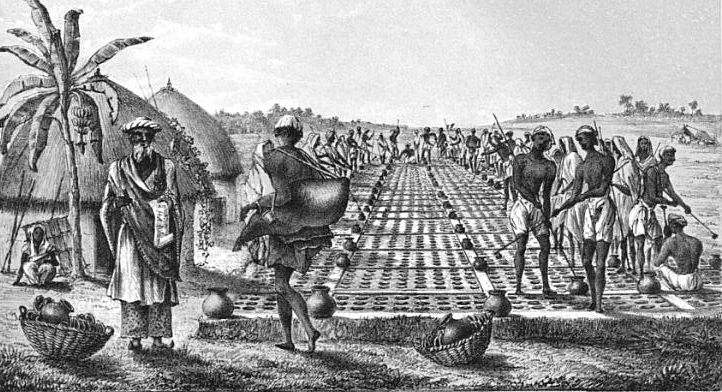How Ice Heated Up Trade Between India and America
This quirky blip in the history of global trade — when merchants would ship ice from Boston to Bombay — teaches us what happens when globalization and unfettered demand mix.
IN THE SUMMER of 1833, a 7.9 earthquake shuddered through South Asia, its epicenter in the Kathmandu Valley, and its tremors traversing all the way to Bengal. Weeks later, after a four-month journey on the Tuscany, nearly 100 tons of ice from the frozen lakes of New England had arrived in the port of Calcutta. Local papers, gossipy and speculative, were quick to draw a link: was the earth trembling in anticipation of this strange new import? Or, had these “crystal blocks of Yankee coldness” arrived earlier, perhaps the earth would have cooled off and not quaked?
Such was the wonder and whimsy that accompanied the arrival of ice in India. When the first cargoes landed, Calcutta-walas gathered on the docks to squint and gape at this glistening oddity. All they had ever encountered was slushy Hooghly ice, the result of freezing water in shallow pits. This was different: solid, sharp-edged, glittering. One man reached out to touch a slab and, mistaking the sting of cold for the scorch of heat, yelled and leapt back, then hurried home in fear. Another asked the captain where the ice had come from, whether it flowered on shrubs and trees. And yet another excitedly carried a block back home but, neglecting to wrap it in cloth — “lest the ice become too warm” — arrived at his destination with a mere sliver.
The Mughals had long imported ice from the Himalayas. But New England ice was something different. The ice trade between India and America didn’t last long. The first shipment of ice arrived in 1833; by 1878, the Bengal Ice Company, India’s first artificial ice manufacturer, had begun production, throttling the trans-oceanic ice trade. But this quirky blip in the history of global trade not only continues to fascinate all those who stumble across it, but also carries lessons for our world today: about patterns of globalization and the implications of unfettered demand.
